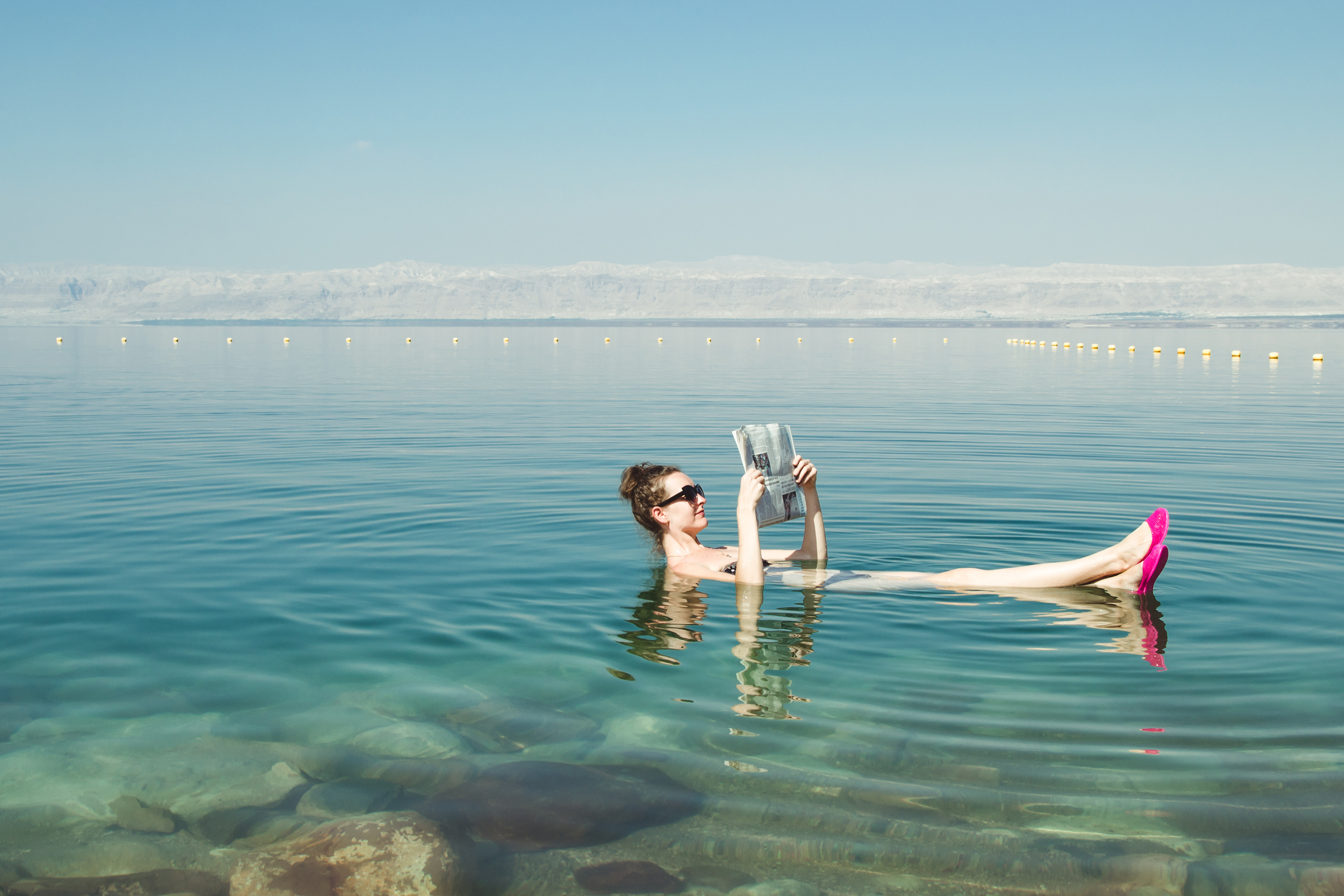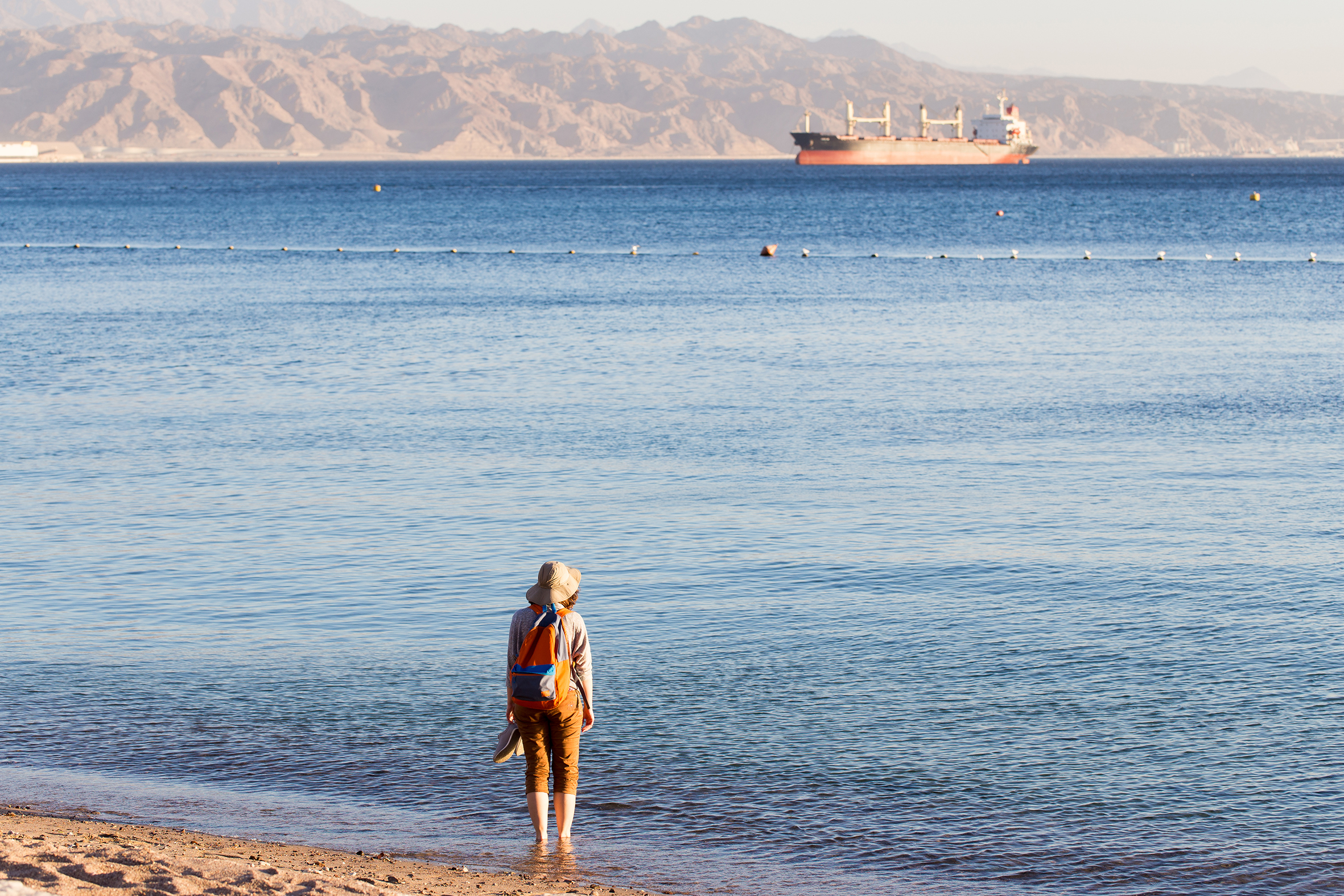Israelis, Palestinians and Jordanians join to counter a regional water crisis and save the Dead Sea.
Once every two weeks, families in Jordan can turn on the taps and pipe up to four cubic metres of drinking water into their rooftop tanks. Unfortunately, this is only a third of the amount they need.
“People suffer a lot,” says Nabil Zoubi, who is married with three children. “We are relatively lucky because we live in Amman, where water is more available compared to other parts of the country.”
Jordan is one of the world's driest countries and lacks sufficient fresh water for its growing population and the 1.3 million Syrian refugees it hosts. Water is also a problem in Israel and in Palestine, and it is worsening with climate change. Meanwhile, the diversion of much of the water that feeds the Dead Sea has caused the biblical lake to shrink, in turn sparking environmental problems. But Zoubi is project director of an ambitious venture now gathering momentum that aims to use the waters of the Red Sea to alleviate the shortage across the region and to revitalize the Dead Sea.
Here’s how the plan will work:
The saltiest body of water in the world, the Dead Sea lies on the border between Jordan, Israel and Palestine, over 400 metres below sea level. Its water level is dropping more than a metre each year. The Red Sea, an inlet of the Indian Ocean between Africa and Asia, is a few hundred kilometres south of the Dead Sea.

As part of phase I of the project, seawater from the Red Sea will be turned into drinking water, and the brine—the high-saline solution remaining after the desalination—will be transferred together with seawater into the Dead Sea to reduce the decline in the water level.
“The drop in the level of the Dead Sea will be reduced by almost 30%,” says Oded Fixler, senior deputy director-general at the Israeli Ministry of Regional Cooperation.
Adds Zoubi, “Jordan, for example, will have running water three days per week, instead of the current eight hours every two weeks.”
From vision to reality
The first phase of the Red Sea-Dead Sea project will extract 300 million cubic metres of water from the Red Sea. About 65 million cubic meters will be processed at a new desalination plant close to Aqaba. “The plant will be the first of this kind in Jordan and in the region,” says Zoubi.
The remaining 235 million cubic metres of mixed brine and seawater will be carried 180 kilometres by pipeline and discharged into the Dead Sea. As the Dead Sea is the lowest point in the world, the water will channel down over 600 metres and generate about 32 megawatts of hydroelectricity a year.
Such a complex plan is not easy to design. “That’s why many institutions and experts contribute to the project preparation, to make it technically sound, environmentally sustainable and bankable,” says Harald Schölzel, an engineer at the European Investment Bank.
The EIB has mobilised an EU-funded technical assistance agreement worth EUR 1.7 million for the project. The French government agency that promotes sustainable development, Agence française de développement, is working with the EIB to ensure the project’s success.
The idea of a pipeline from the Red Sea to the Dead Sea dates back to the peace agreement between Israel and Jordan in 1994. But it was only in 2013 that Israel, Jordan and Palestine signed a memorandum of understanding in Washington on the current plan. That was a landmark regional water-swapping agreement that includes the Red Sea-Dead Sea project, the release of water from the Sea of Galilee in Israel to Jordan, and the sale of drinking water from Israel to Palestine.
The Red Sea-Dead Sea project thus contributes to the EIB’s Economic Resilience Initiative, a major programme to boost investments in the region that have a positive impact on lives, as well as creating new opportunities for employment.

European support
International organisations plan to provide further support as the project progresses. The EIB is considering a EUR 60 million loan alongside financing from French, Italian and Spanish development agencies. “We’re mobilising our whole toolkit to serve the Red Sea-Dead Sea project: technical advisory services, a public sector loan blended with grants and a private sector loan, as well as low interest rates,” says Francesco Totaro, an EIB investment officer dealing with the operation. The EIB is also considering a loan of up to EUR 250 million to the company that wins the tender for the project.
This joint package for Jordan may be blended with a EUR 40 million grant from the EU-funded Neighbourhood Investment Facility. (The governments of the US and Japan pledged respectively USD 100 million and USD 20 million to the project.)
“The EU is supporting this massive project with an integrated approach: EU grants, money pledged by Italy, France, Spain, and it is all coordinated by the AFD and the EIB,” says Andrea Fontana, the EU ambassador to Jordan.
Ambassador Fontana adds that the Red Sea-Dead Sea project benefits the whole region, and showcases how well Israelis, Jordanians and Palestinians can work together. It creates a positive relationship that, he hopes, can help reopen negotiations between Israel and Palestine, suspended since 2014.
